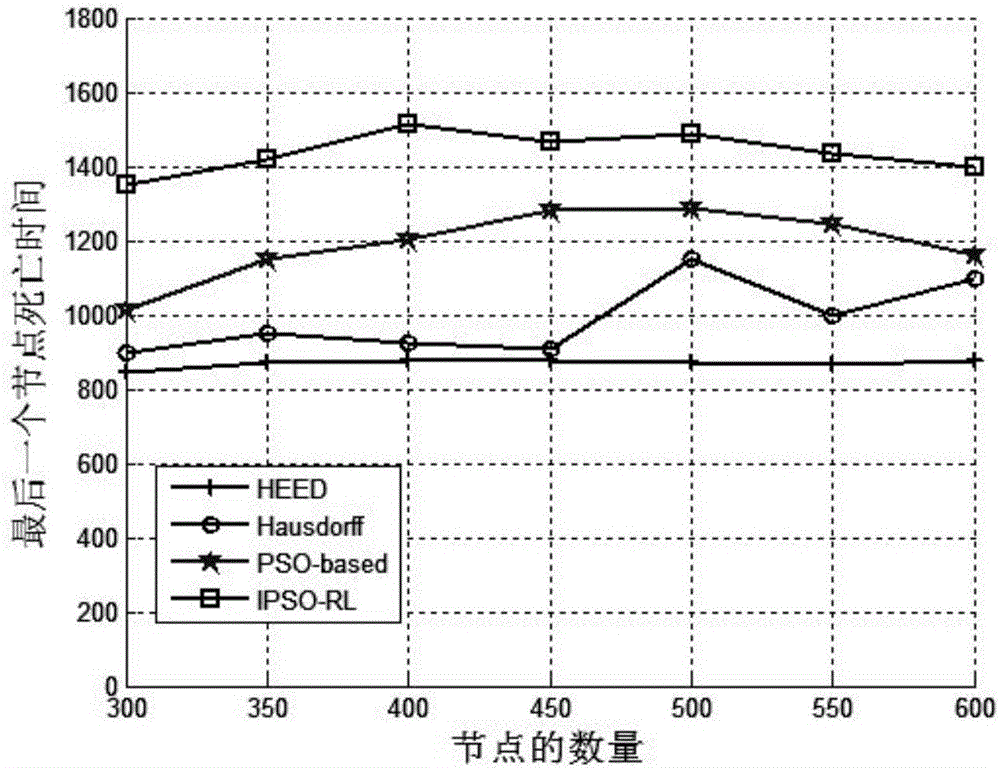Wireless sensor network routing energy-saving method with load balancing
A wireless sensor and load balancing technology, applied in network topology, wireless communication, network traffic/resource management, etc., can solve problems affecting network performance, unbalanced network energy consumption, heavy load, etc., to extend the life cycle and balance energy consumption , the effect of reducing energy consumption
- Summary
- Abstract
- Description
- Claims
- Application Information
AI Technical Summary
Problems solved by technology
Method used
Image
Examples
Embodiment Construction
[0040] Starting from the characteristics of the wireless sensor network and the clustering routing algorithm, the present invention studies the energy-constrained wireless sensor network clustering routing algorithm. The specific process is described as follows:
[0041] Step 1. Randomly define wireless sensor nodes in a limited area, the initial energy of each node is the same, and define the location of the base station;
[0042] Step 2. List the fitness function of the selected cluster head, specifically:
[0043]
[0044] Where F CH In order to select the fitness function of the cluster head, it is composed of two parts of information representing the remaining energy information and the position information; α∈[0,1] represents the weight, which is the fitness function with The scale factor; Represents the ratio of the average remaining energy of the cluster head node and the non-cluster head node. It is mainly used to evaluate the remaining energy of the node. The larger the ...
PUM
 Login to View More
Login to View More Abstract
Description
Claims
Application Information
 Login to View More
Login to View More - R&D
- Intellectual Property
- Life Sciences
- Materials
- Tech Scout
- Unparalleled Data Quality
- Higher Quality Content
- 60% Fewer Hallucinations
Browse by: Latest US Patents, China's latest patents, Technical Efficacy Thesaurus, Application Domain, Technology Topic, Popular Technical Reports.
© 2025 PatSnap. All rights reserved.Legal|Privacy policy|Modern Slavery Act Transparency Statement|Sitemap|About US| Contact US: help@patsnap.com



